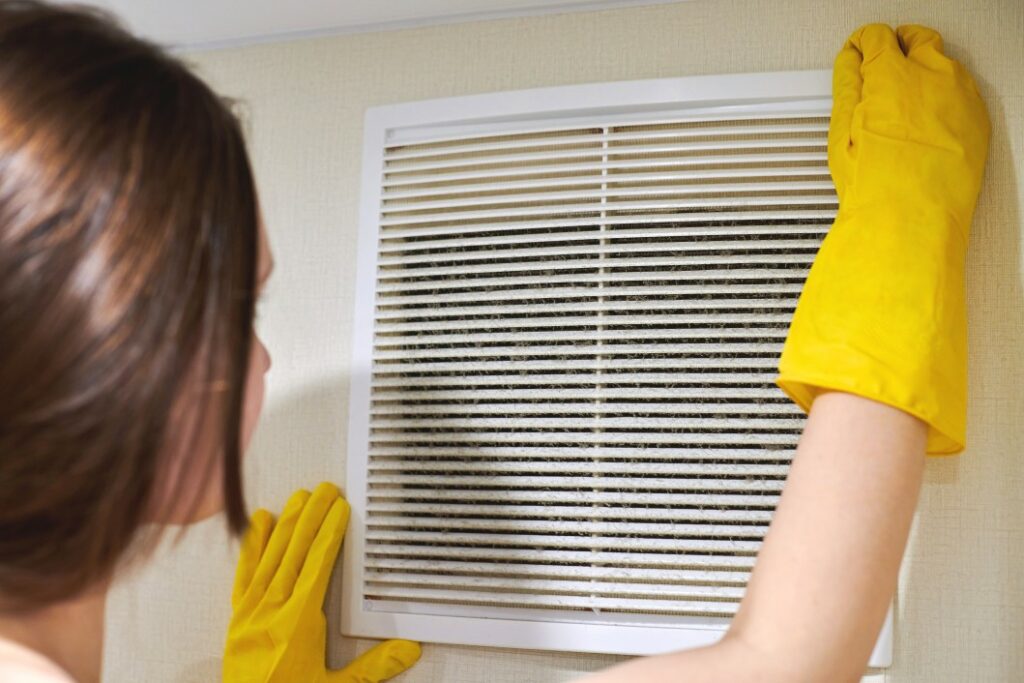It’s that time of the year for sniffles, sore throats, and headaches as the trees and flowers are in bloom. Spring isn’t easy on all of us, especially if we cannot control allergens inside the home. But while you might think that allergies are something related to the air quality outside your door, you should know that allergy and asthma control begins at home.
The main sources of indoor allergens are pets, carpeting, soft furniture, stuffed toys, bedding, damp areas, indoor plants, mattresses that aren’t in allergy covers, and pillows and bedding you can’t wash in hot water. And there may even be more allergens on surfaces than in the air.
But don’t worry! You can take steps this Spring to control allergens — including pollen, mold, and dust mites — from coming indoors, and improve the air quality of your home by managing pet dander as well.
Better air quality in your home, office, school, and car can reduce allergy and asthma triggers. So anyone that suffers from seasonal allergies will want to control their contact with indoor airborne allergens, ventilate indoor areas well, and use air cleaners to clean and purify their indoor air.
Here’s what you should add to your spring cleaning list and other steps to control allergens inside your home:
Keep your windows closed. Opening windows quickly circulates pollens throughout your home and allows those inside to breathe them in. Use fans or air conditioning instead.
Immediately take care of any winter water damage. If you’ve recently had a water damage event (like a big snow storm), you could easily have toxic mold or bacteria particles circulating in the air in your home. For many people, exposure to these toxins produces a reaction not unlike allergies, so it is important to take care of water damage right away.
Change your filters. Remember to change your HVAC filters and get your HVAC professionally cleaned. This will help control allergens in the home.
Vacuum once or twice a week. Vacuuming help you control allergens. You’ll get your best result by using a vacuum with a HEPA filter that doesn’t put dust and allergens back into the air.
Wash your bedding and mattress covers. The best possible scenario is to use zippered allergen-resistant covers on your pillows, mattresses, and box springs because these covers are very effective in controlling contact with dust mites. But whether you use a cover or not, wash your bedding, uncovered pillows, and stuffed toys in hot water each week. Then dry them in a hot dryer cycle to kill dust mites.
Control dust mites. Keep surfaces in your home clean and uncluttered to better control allergens. When possible, choose bare floors in lieu of carpet, especially in the bedroom where you spend the majority of your time. If you must have carpet, use low-pile carpets or throw rugs you can wash. Also remember to clean drapes and overstuffed fabric furniture.
Use a HEPA vacuum. If you are not cleaning with a HEPA vacuum you are recirculating smaller particles back into the environment when you vacuum. Smaller particles pass through a traditional filter and come right out the exhaust vent in the vacuum cleaner. You’re recirculating some of these particles back into your breathing zone as you clean.
Use a dehumidifier. Reducing humidity decreases dust mites and mold growth to help you control allergens. Air conditioners help reduce humidity too. And while you are reducing humidity, think of the damp areas in your house. Don’t run your showers for a long time before bathing, limit yourself to a few house plants, and as mentioned previously, fix all leaks and other causes of damp areas.
Prevent pet dander. If you know you have allergies, most doctors will suggest that you choose pets without feathers or fur to help control allergens. There really is no such thing as a hypoallergenic pet, though some animal dander does have fewer allergenic proteins. Frequent bathing and brushing your pets often may reduce symptoms. But avoid grooming your pets personally, or wear a mask, if you have animal allergies. At least keep pets out of your bedroom and close the doors to bedrooms when you are not home to keep pets out. Also wash and change your animal’s favorite furniture and toys often.
Good cleaning habits in your home will help keep your allergies managed year-round, but no home will ever be allergen-free. Whether you are buying a home or you’ve been there for a while, these tips can help; By using these tips and remembering to take some common sense seasonal steps, your home can be the haven you need now that Spring has sprung!




Leave a Reply